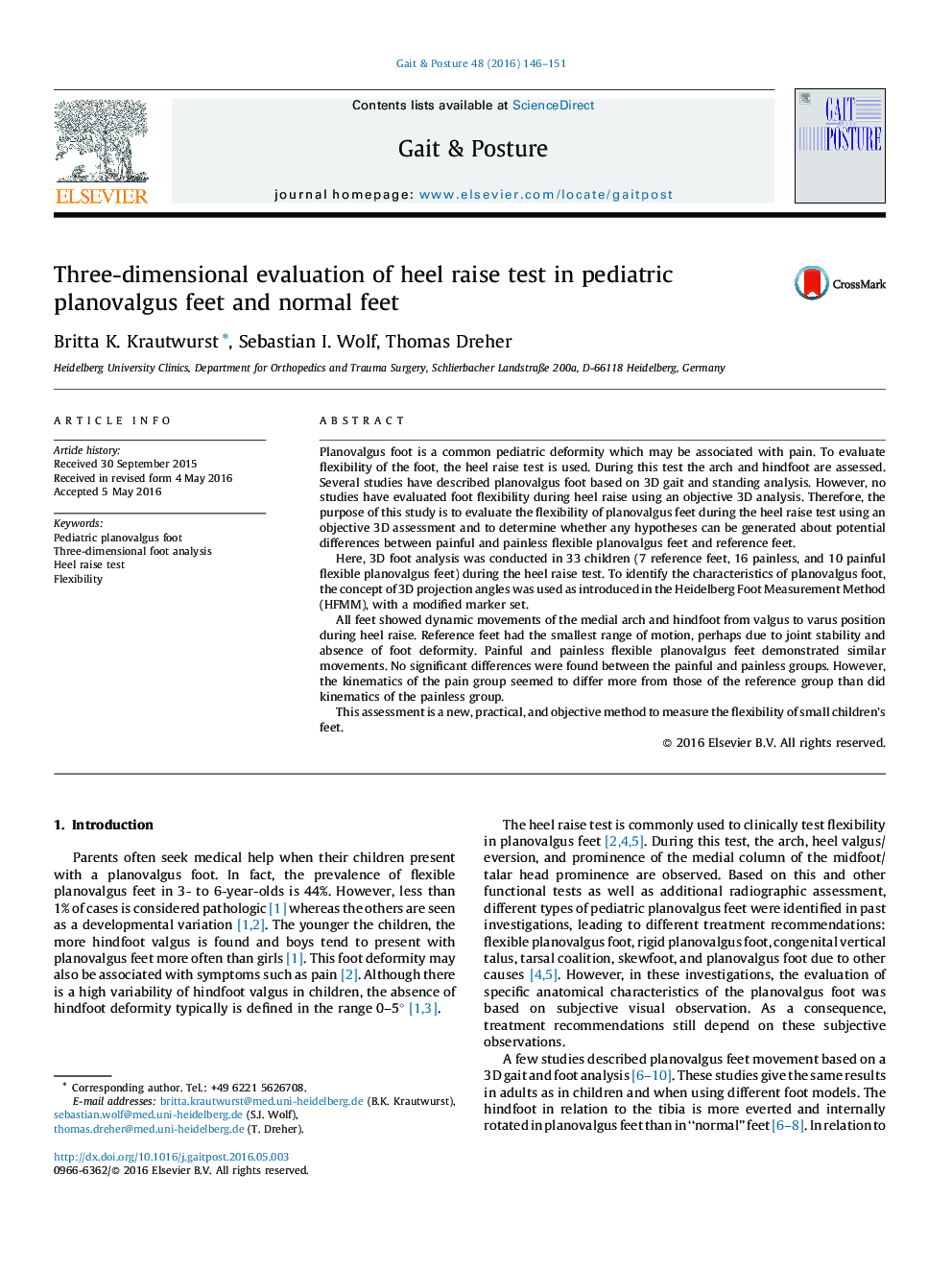| کد مقاله | کد نشریه | سال انتشار | مقاله انگلیسی | نسخه تمام متن |
|---|---|---|---|---|
| 4055790 | 1603847 | 2016 | 6 صفحه PDF | دانلود رایگان |
• A new 3D assessment is introduced to evaluate the heel raise test.
• This method is an objective, reliable, and feasible to measure small children feet.
• Visual classification confirms the findings of the 3D system.
• The flexibility could be demonstrated in planovalgus feet.
• Painful planovalgus feet demonstrated a late valgus correction in heel raise.
Planovalgus foot is a common pediatric deformity which may be associated with pain. To evaluate flexibility of the foot, the heel raise test is used. During this test the arch and hindfoot are assessed. Several studies have described planovalgus foot based on 3D gait and standing analysis. However, no studies have evaluated foot flexibility during heel raise using an objective 3D analysis. Therefore, the purpose of this study is to evaluate the flexibility of planovalgus feet during the heel raise test using an objective 3D assessment and to determine whether any hypotheses can be generated about potential differences between painful and painless flexible planovalgus feet and reference feet.Here, 3D foot analysis was conducted in 33 children (7 reference feet, 16 painless, and 10 painful flexible planovalgus feet) during the heel raise test. To identify the characteristics of planovalgus foot, the concept of 3D projection angles was used as introduced in the Heidelberg Foot Measurement Method (HFMM), with a modified marker set.All feet showed dynamic movements of the medial arch and hindfoot from valgus to varus position during heel raise. Reference feet had the smallest range of motion, perhaps due to joint stability and absence of foot deformity. Painful and painless flexible planovalgus feet demonstrated similar movements. No significant differences were found between the painful and painless groups. However, the kinematics of the pain group seemed to differ more from those of the reference group than did kinematics of the painless group.This assessment is a new, practical, and objective method to measure the flexibility of small children's feet.
Journal: Gait & Posture - Volume 48, July 2016, Pages 146–151
